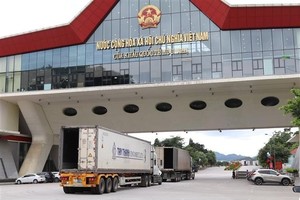
The article noted that Vietnam’s GDP growth rate of 2.9 percent was low by historical standards – it typically manages 6-7 percent – but still put it ahead of every other major economy in Asia and looks remarkable given the damage that the coronavirus pandemic inflicted on the world.
Even at the peak of the crisis in the second quarter of the year, Vietnam just about eked out positive growth and has recovered quickly, it said.
It held that three things went especially well for Vietnam in 2020. The first will hopefully be irrelevant once the coronavirus pandemic passes, but is encouraging for the country’s governance. The second is extremely promising for the evolution of the economy – it’s the main reason to believe that Vietnam still has superior prospects to any other comparable emerging economy. And the third bodes well for the stockmarket’s long-term progress – although this remains a high-risk market and investors need to expect some ups and downs along the way.
Vietnam’s immediate strength is that the impact of coronavirus has been fairly small and controlled compared to most of the world. So far, it’s had around 2,500 reported cases and 35 deaths. As in every country, there will be some unreported cases, but Vietnam’s statistics look pretty reliable – if there were large numbers of deaths that had not been recorded, it would be obvious.
“This is not down to luck. All the specialist investors in Vietnam that I spoke to for this article – Dominic Scriven of Dragon Capital, Andy Ho and Khanh Vu of VinaCapital and Craig Martin of Dynam Capital – give a great deal of credit to how quickly the government acted once the first signs emerged that Sars-CoV-2 was going to be a threat,” wrote Cris Sholto Heaton, the author of the article.
He held that the ability to keep the pandemic in check and keep most of the economy open most of the time is a crucial part of why Vietnam did well in 2020 – but it’s not the whole story. Longer term, the more important factor is the way that the Vietnamese export sector is benefiting from companies moving some of their manufacturing and sourcing away from China to other destinations.
Relatively good education and skill levels in the workforce and government policies to attract foreign direct investment (FDI) are a key part of this – but that’s been true for a long time, added the article.
























